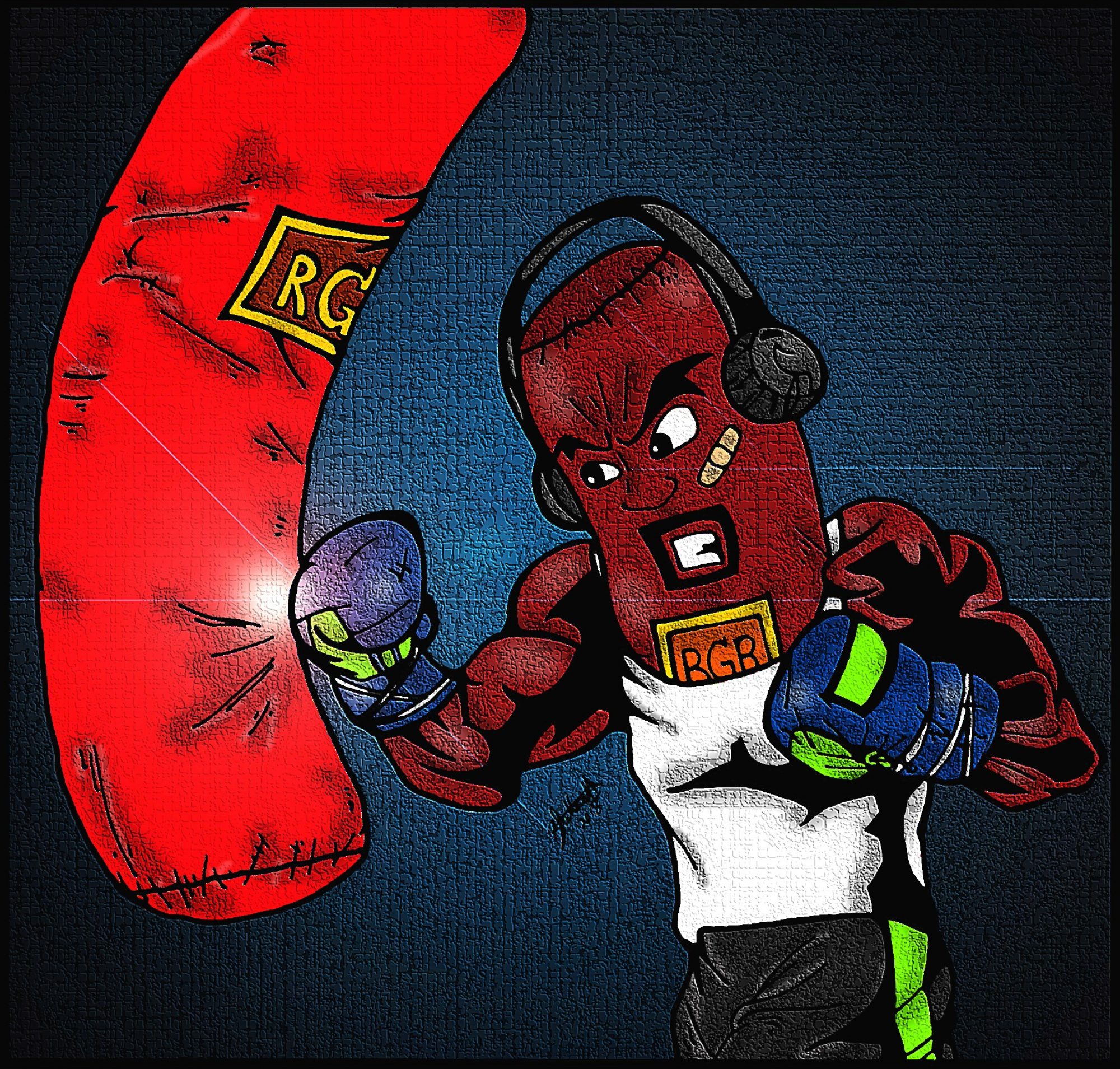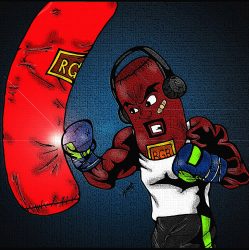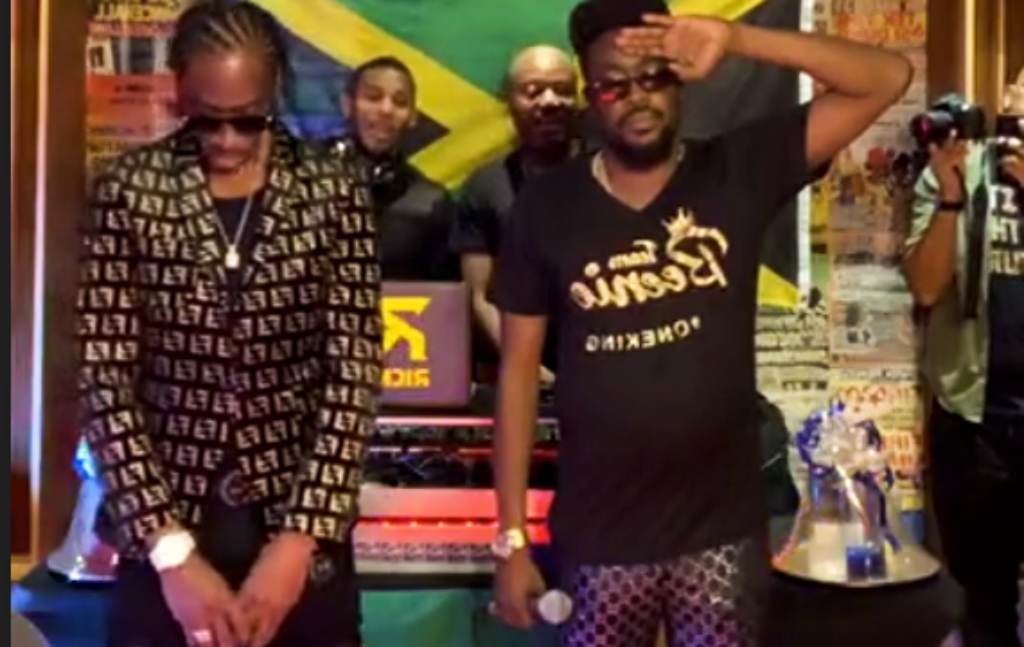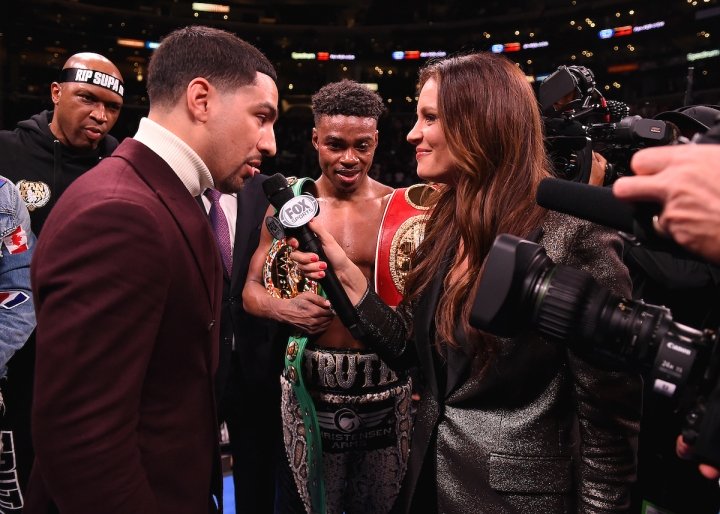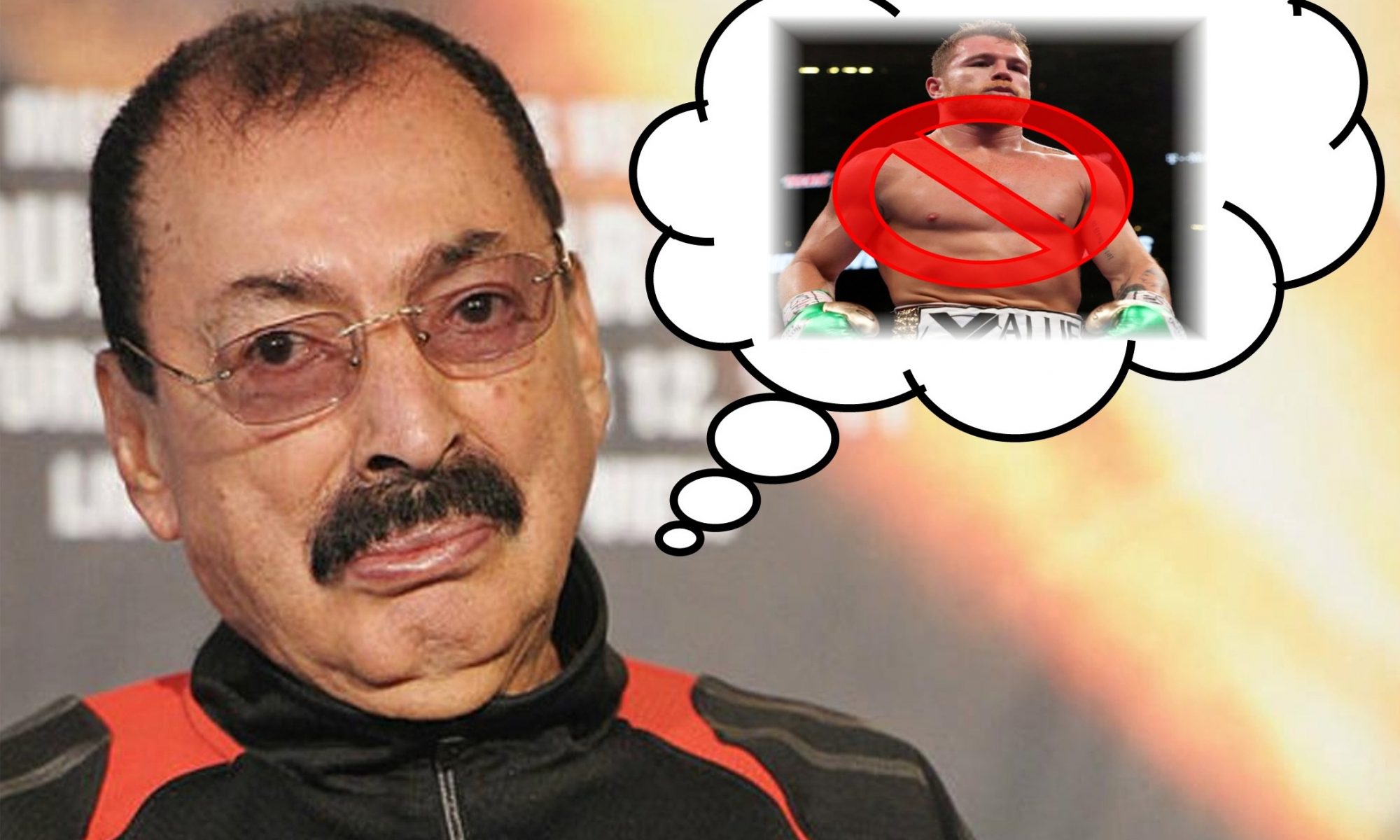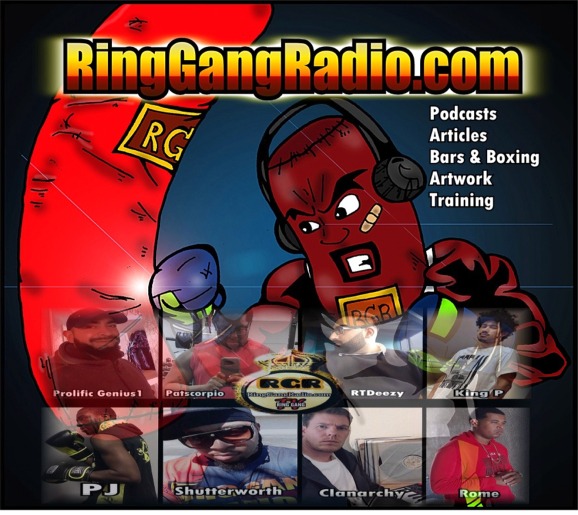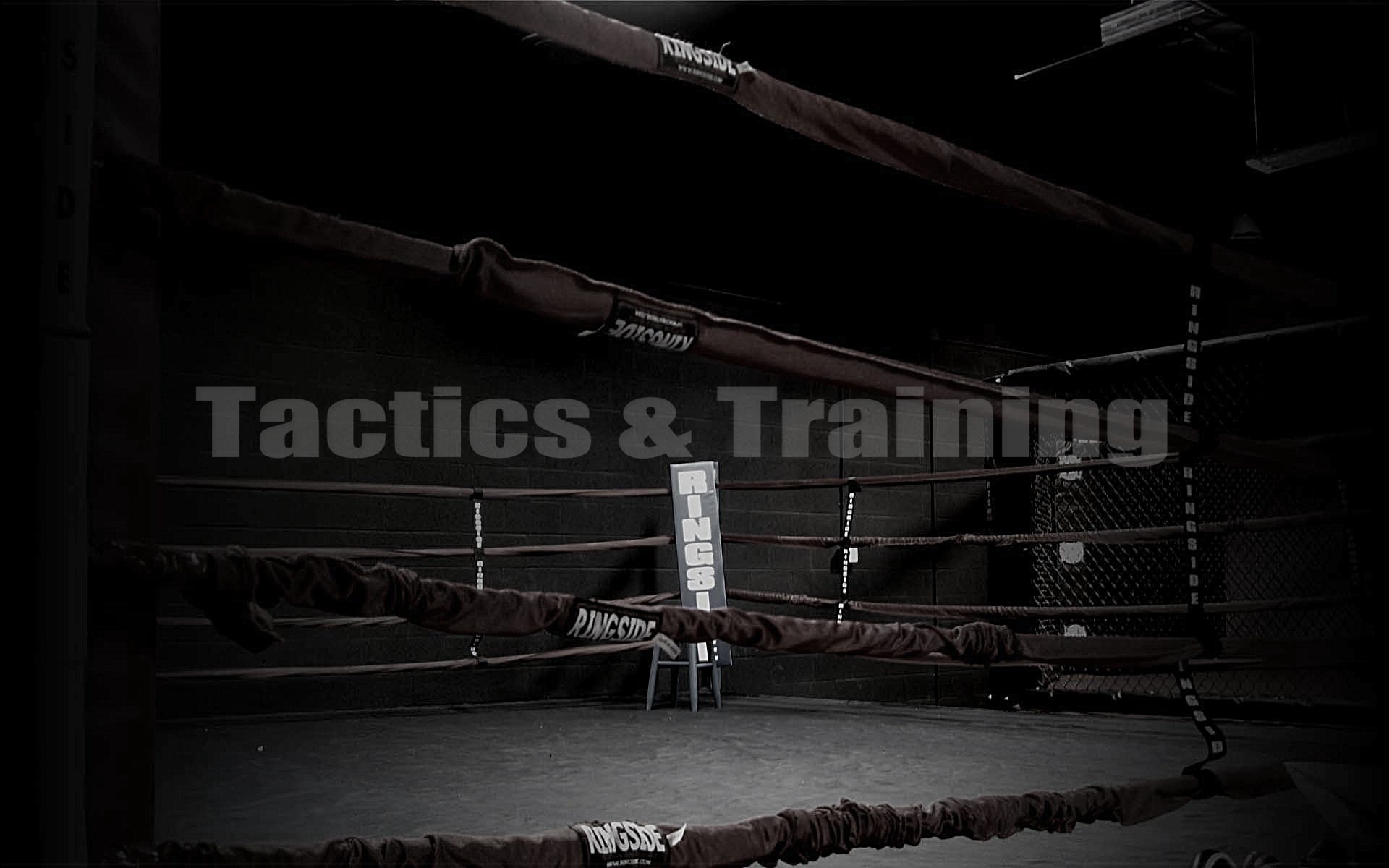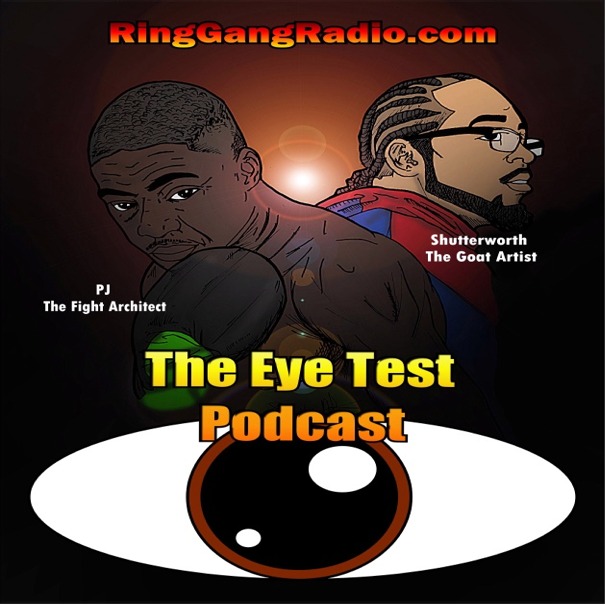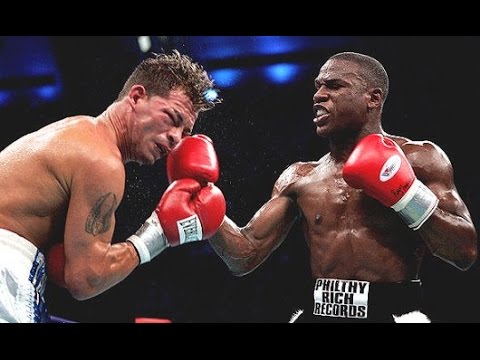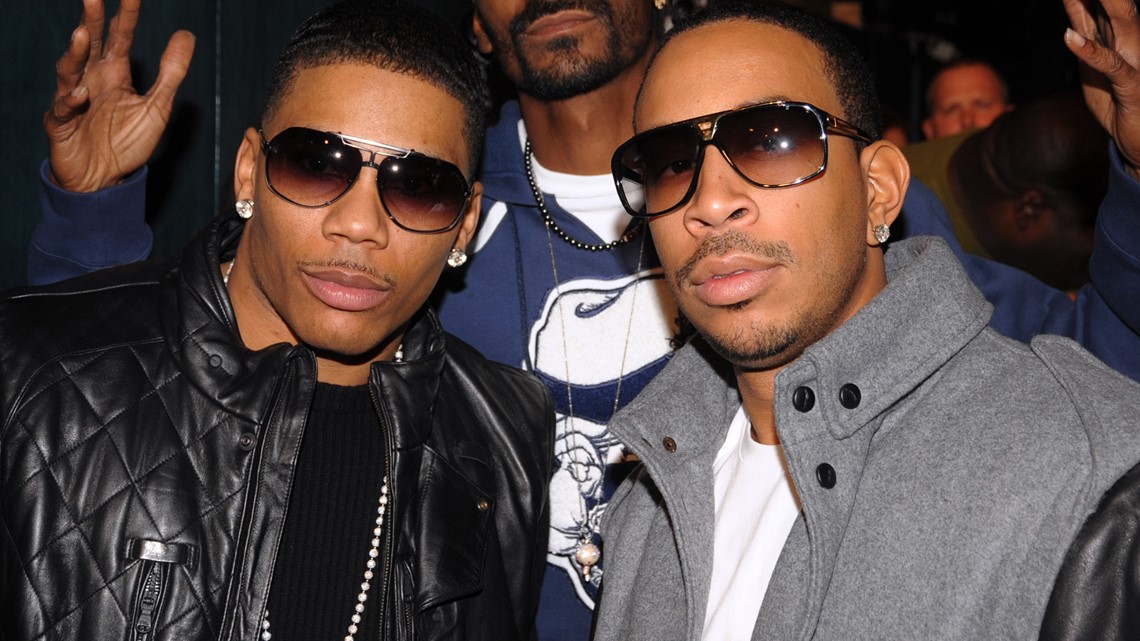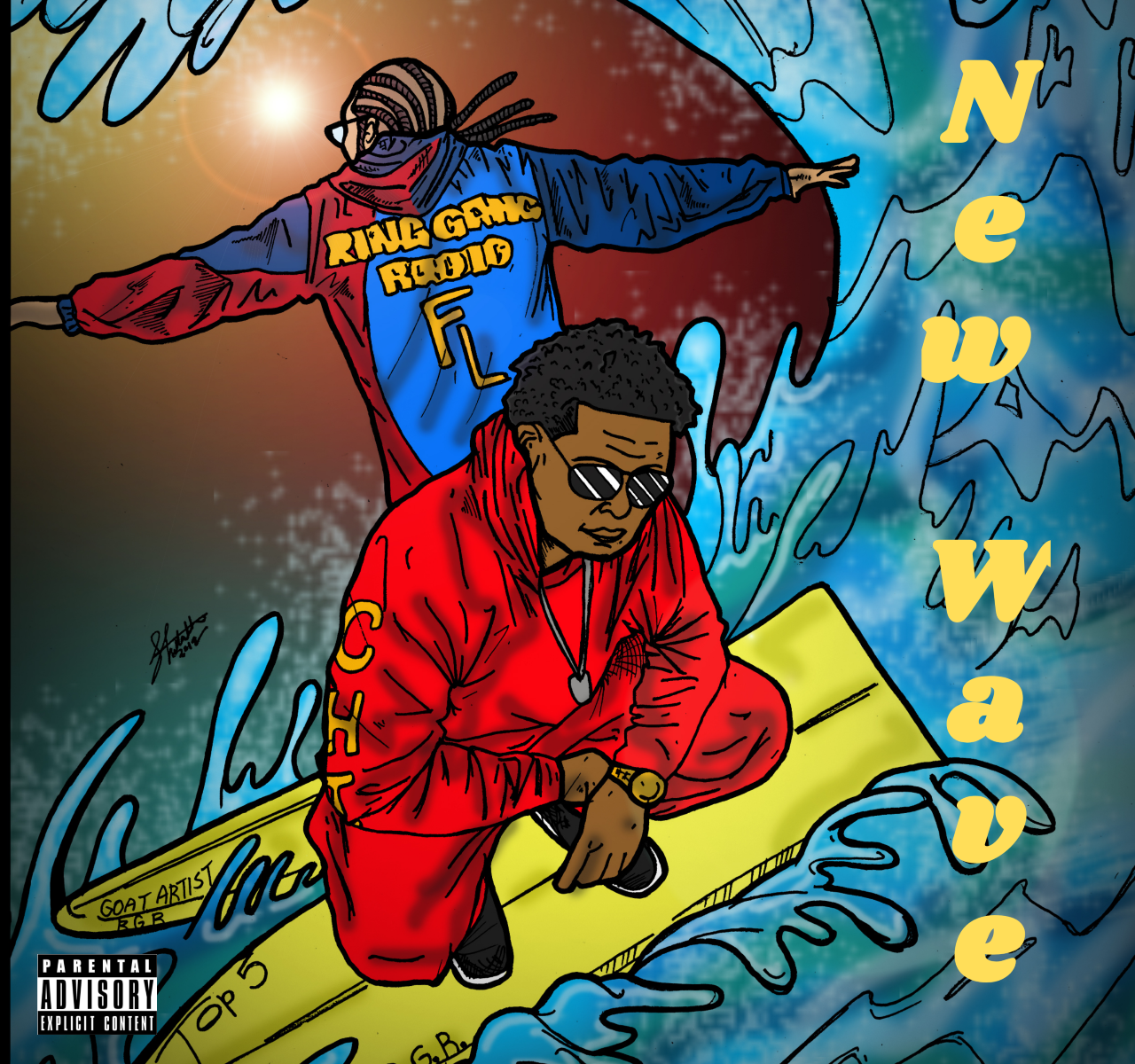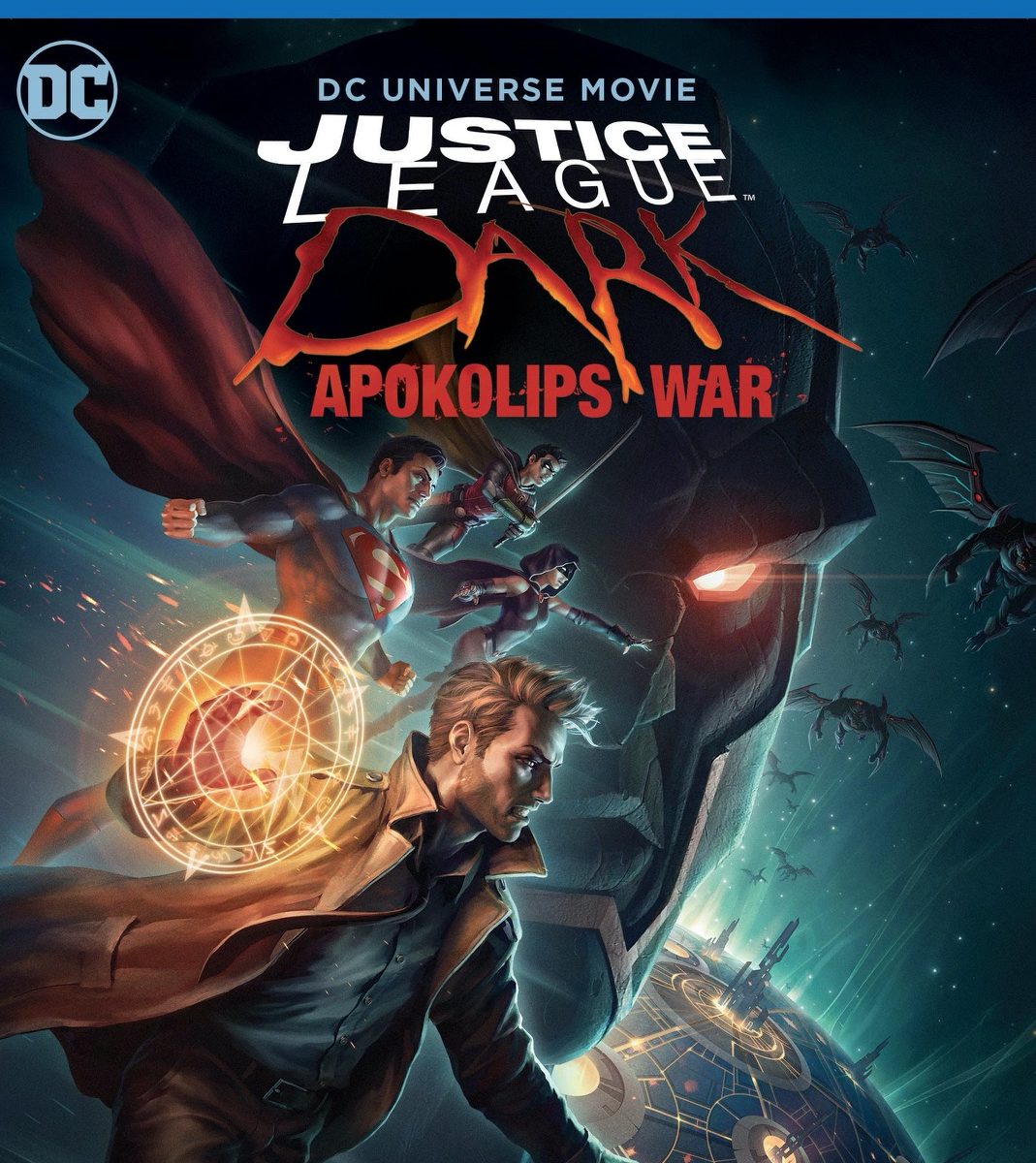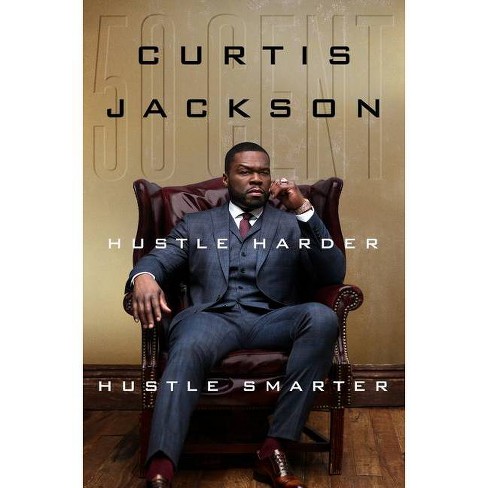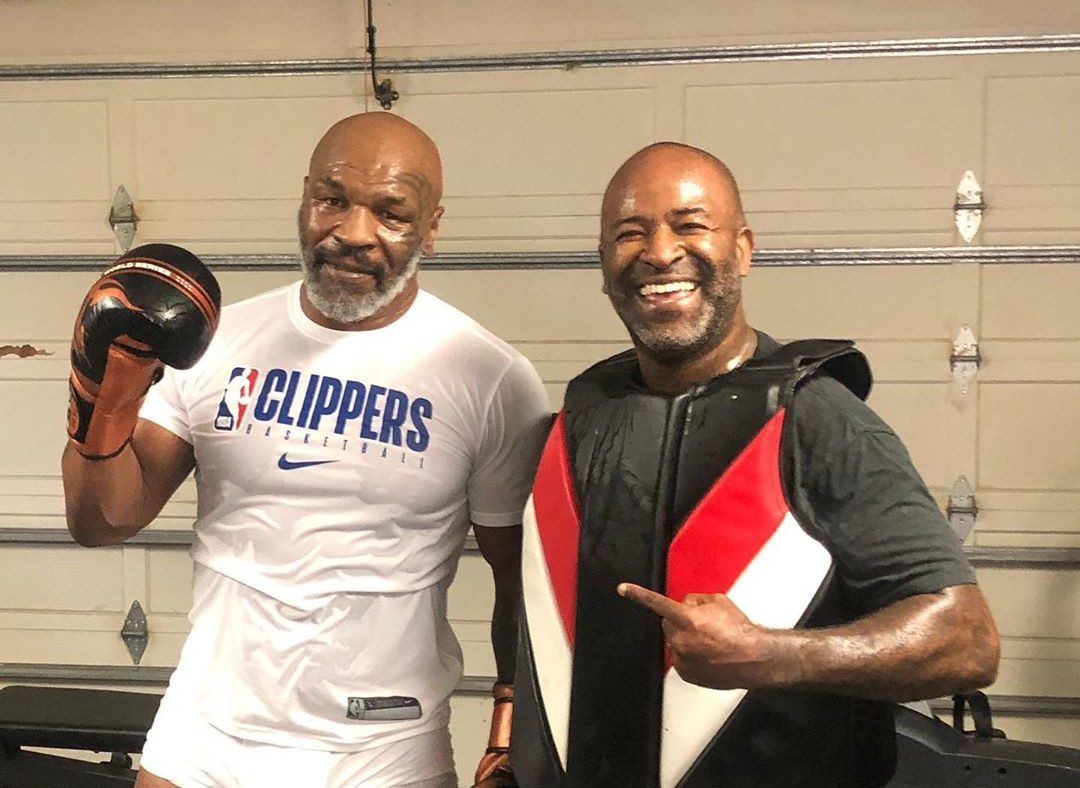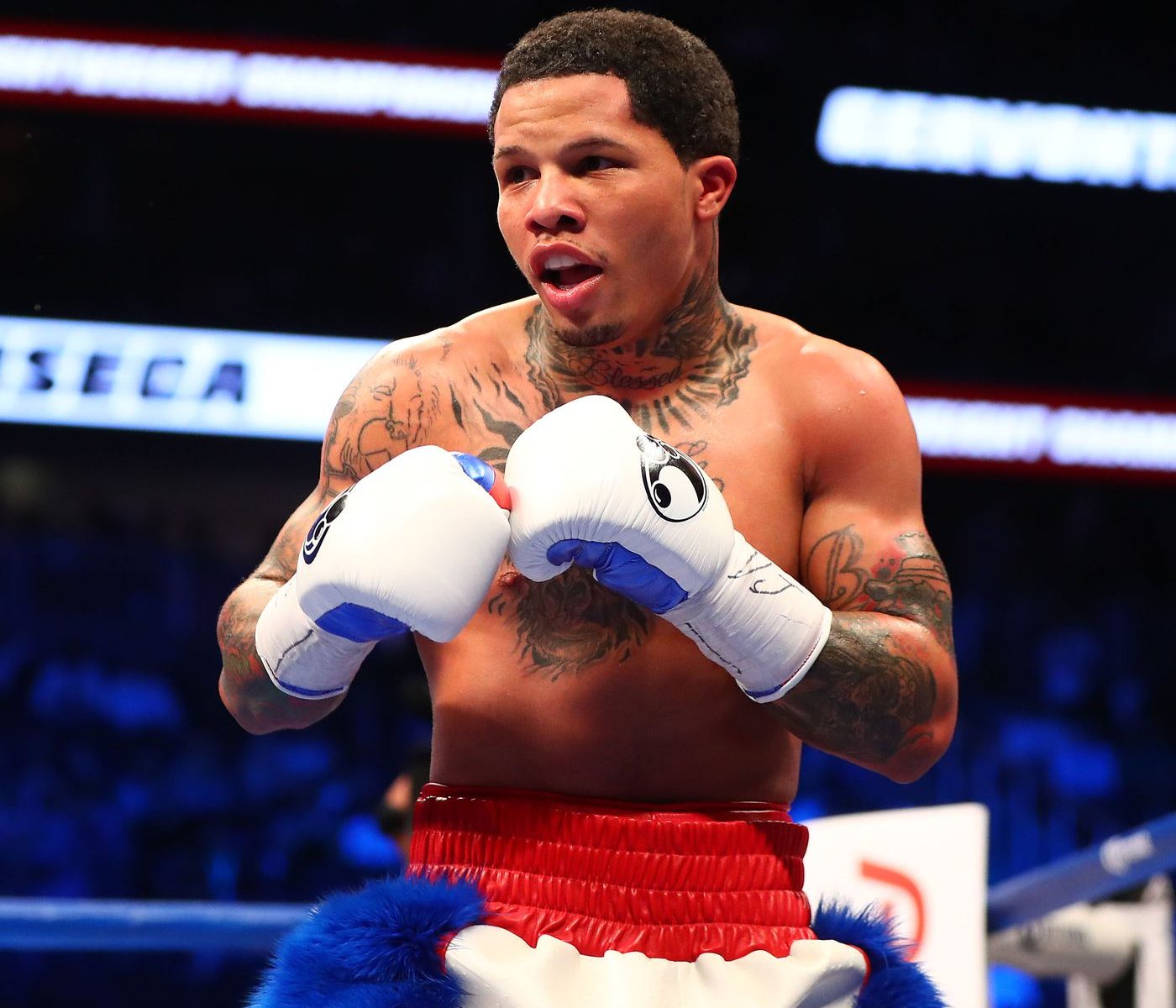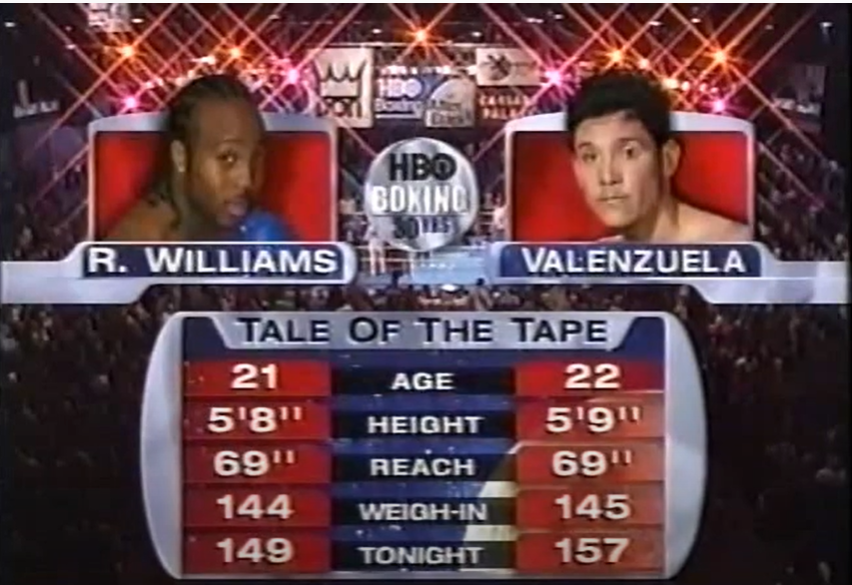In our pre podcast banter, the Ring Gang crew discuss their reactions to the Beenie Man vs Bounty Killer and Jagged Edge v s112 battles on Verzuz only on Instagram
Real Talk Boxing: Errol Spence vs Danny Garcia: Is this next? plus Canelo talk
Real Talk Boxing: Nacho Beristain thinks is Canelo lacking
Nightly Knockouts
Real Talk Boxing: Would Floyd Mayweather be a good trainer?
Pre Podcast Banter – Rapper Sidekicks – Episode 7
The Eyes in the Ring (Boxing Training)
What is seen to lead to making a call in the fight.
We have all experienced it, seeing a fight. Watching the moves and decisions made during the 12 rounds of a boxing match (5 rounds for MMA and Muay Thai title bouts or 3 for an amateur bout for all three sports). The judges call comes through a winner or a draw has been decided and people go back and forth on how one fighter won over the other.
People get heated, start explaining why what they saw was more valid than another or simply bring perspectives to make you want to rewatch the fight under more controlled circumstances (like no sound to ignore the crowd) possibly making one change their mind or strengthen their resolve.
While we all have had our opinions on how one fighter won over the other let’s consider some of the major factors happening during the bout.
Judge Criteria
Judges are looking for the following goals to be met by either fighter (this is in no particular order)
Effective Aggression
Ring Generalship
Defense
Clean Punches/Hard Punches
Seems straight forward enough, always remember though everyone is human you are bound to have some leaning or bias to a certain style or approach or in this case criteria over the other. The other thing to remember its a round by round basis so it makes thing murky if you cannot remember what happened (thus the scorecards to keep track)
Effective Aggression
The most interesting one, it is in essence the most simple. Who is forcing the fight? So it would be natural to think of the person moving forward. But then comes the Adjective before aggression, “effective”. What is effective aggression really?
Obviously to be in the fight you have to be in range of the fight so move towards the danger, that is one way to look at it. However recklessly rushing in may not be the wisest idea.
Risking eating something worse for being too eager to jump in.
Now it doesn’t mean you have to be cagey being excessively worried about catching something in return. The best counter punchers know they are going to get caught with something, it is how you can force the person to come back with what you want to get the blow you seek.
The person who throws first will usually have the exchange in their favor, the question is can they time it in their favor.
Ring Generalship
Another aspect, how the ring is used. This is where the fine line between moving and running gets blurred for a lot of people. There is nothing wrong with making space for yourself and if you see the shot coming, why not get out of the way? The question after that is are you able to fire back after the fact?
The most common scenario is when someone is cornered, you’re most likely going to do something defensively or offensively to get out of a corner to hopefully if paying attention get back to the center of the ring. Because if you wind back up in the corner or on the ropes you kind of have defeated the purpose or are looking to catch your breath.
Defensively or…..
Offensively
In combat sports controlling the center or having the majority of the ring space behind you is ideal, you have more mobility options than the other person. So you may see people dance around the ring to have someone walk aimlessly towards them like the David Haye vs Pulev fight or someone stalk their opponent to waste energy getting away to lead into a finish like Evander Holyfield vs Buster Douglas.
Defense
This is a mixed bag, in the end everyone loves watching someone evade punches. It’s just how and if they notice the defense happening. You want to protect yourself from punches but not be helpless while doing so. There is a good chance the referee will stop the fight due to no response coming back.
This also ties into the parts of defense some might find off putting saying things like someone is running or hugging too much, anyone who has gone past even 3 hard rounds knows that being able to tie someone up for even a few seconds of breath makes a huge difference.
We have talked before in other articles and videos on various guards and how they work, so lets touch on some key things most of the time is considered good defense.
- No clean shots landed
- This is based on where the judge can see you vs the person throwing at you, if they can’t see you. You’re not getting the nod
- Making the person miss
- While making someone miss by inches is great, it might still look like you got hit. Don’t take it to heart fighters, you got less lumps for it and that’s all that matters.
- If the person looks sloppy trying to land on you the scoring will generally fall in your favor, especially if a counter came from it
- What was done after the defense
- To roughly quote the late Roger Mayweather, “you don’t get points, blocking punches. You get points by punches landed” being able to avoid the shot is great. Making them pay adds the exclamation point even if it didn’t land clean it shows you have the answer ready and that is easier to notice
Clean/Hard Punches
This can also get a little murky, but then again what criteria doesn’t? But it falls to two things, did it land without it being blocked and did it hurt the person (be it off balance or a more visual reaction, like spaghetti legs)
I call this part the antithesis of that one aspect of defense, you can avoid a flurry but if you don’t answer the flurry. The one who flurried got that round in the bag, a good example is Sugar Ray Leonard vs Marvelous Marvin Hagler where Ray would flurry towards the end of a round to steal it.
or watch Gary Russel Jr.
Everything in the end falls into each other, meshing and melding into the approach of the fighter that night. Sometimes they may lean more into positioning. Other times they want to bring the fight to the person, just like judges we are all subject to some form of bias based on what we have seen before or like to see (remember highlight reels are just highlights not the fight itself) the crowd but we should consider that criteria when watching fights so we can have somewhere to begin the conversation of how each fight is favored.
As always, stay training, stay healthy and always remember to rebuild your game.
This article was written by PJ the Fight Architect who was inspired by the “A Tale of Two Fights” article written by Shutterworth back in November 28, 2018.
Nightly Knockouts
The Eye Test: Ryan Garcia vs The World / Discipline is not a Talent!
Pre Podcast Banter-Boxers Best Performances – Episode 6
Real Talk Music: Ludacris vs Nelly Verzuz on Instagram Live Preview
On this segment of “Real Talk”, the Ring Gang crew preview and discuss the upcoming “Verzuz” battle on Instagram this weekend between Ludacris and Nelly.
New Wave from Rome feat Shutterworth
Chicago’s own Rome drops his new single with a little help from Shutterworth. New Wave is available on Spotify an all streaming platforms.
Nightly Knockouts
Real Talk Movies: Justice League Dark: Apokolips War Movie Review
Real Talk Music: 50 Cent New Book & Lloyd Banks
Real Talk Boxing: The Miseducation of Mike Tyson
The Real Ring Gang – Pre Podcast Banter Episode 5 (Gervonta Davis, LSC, and Mike Tyson)
Forgotten Fades – Ricardo Williams Jr. vs Juan Valenzuela
Sometimes we get fights that for one reason or another that has a fighter that pulls out and they are replaced with a different fighter. Sometimes that different fighter maybe looking for a second chance redeem themselves and turn their career around. Sometimes that results in a fantastic fight happening. Sometimes an unexpected result that happens that no one thought would be possible or feasible. This is the tale of Ricardo Williams Jr vs Juan Valenzuela.
Ricardo Williams Jr was a highly touted prospect from Cincinnati, Ohio. At the 2000 Olympics Games, he had a good showing and came back with the silver medal. After which he would turn pro and sign with Lou DiBella along with some of his Olympic teammates. “Slick Ricky” showed glimpses of being a future champion within his first couple of fights. He displayed a very entertaining boxer puncher style who whipped beautiful combinations into his opponents. In his 9th professional fight, he would score a very impressive victory soundly outpointing former IBF world light welterweight champion Terron Millett over 10 rounds. With the good however there was the bad. When Ricardo signed with Lou DiBella, he received a signing bonus of $1.4 million dollars. That amount was unprecedented for a debuting fighter. A millionaire before accomplishing anything significant in the ring, he also started showing signs of being underconditioned and listless. This would plant the seeds of destruction for him and his career.
Juan “El Pollo” Valenzuela in contrast, did not have such an illustrious debut. He debuted a year earlier in 1999. His career was a tougher road travelled as he worked his way up the ladder. In 2002 we burst on to the world stage when he upset future world champion Julio Diaz on an episode of “ESPN Friday Night Fights”. Diaz was just coming off a very close split decision loss to Angel Manfredy in a lightweight title eliminator, which was his first loss. In his second fight from that loss, he faced “El Pollo” and was shockingly knocked out standing up in 1 round. Unfortunately for Valenzuela, he would follow that upset win with 2 straight losses to then highly touted prospect Alex Trujillo and hard punching journeyman Ernesto Zepeda.
The fight was scheduled as the main undercard support for Tim Austin vs Rafael Marquez. Ricardo was originally scheduled to face Juan Carlos Rubio but Rubio ended up pulling out of the fight. So “El Pollo” was penciled in as a last-minute replacement. This was scheduled to be a 10-round fight at 140 pounds. However, Ricardo would be overweight by 1 pound on top of Valenzuela also weighing at 144. It was changed to be contested at welterweight. The fight night weights would show Ricardo Williams at 149, Juan Valenzuela at 157. Once again, questions were raised on Ricardo’s commitment and dedication to his training. On that night, live on HBO, some of those questions would be answered.
From the opening bell, Valenzuela put the pressure on Williams and moved forward. Valenzuela would let both hands fly eager to test the smaller man’s chin. Williams was able to move back and land some nice counters. However, the counters did not really seem to faze much less stop any of Valenzuela’s momentum. What also was apparent was that Ricardo Williams was not conditioned for a fight like this. From Round 2 on, you can see him with his mouth open as he moved around the ring. In between rounds, you could see him in his corner taking deep breaths. Round 3, Valenzuela keeps moving forward on Williams starting to land some big shots. That constant pressure from a bigger man had Williams on edge. His legs starting to get heavier, Williams opted to start standing his ground to trade. In doing so, Valenzuela started mixing up his head shots with some vicious body work. The end of the 4th round, the crowd exploded as both men landed power shots on each other. The middle rounds saw Valenzuela start taking control of the fight. When Williams fights off his backfoot, Valenzuela is in full pursuit. “El Pollo” barely giving him any room to set and land too many effective counters. Failed to get his respect, Williams started getting outworked and taking some unnecessary shots. He was being bullied into the ropes catching combinations upstairs and downstairs. One thing that I could not help but notice: “Slicky Ricky” was a tough guy and had some steel resolve in him. This had been an incredibly rough fight for a prospect to go through. That resolve would be tested even more in the later rounds of the fight.
In round 8, Valenzuela found his mark and was hitting Williams repeatedly with power shots. At one point in the round, Ricardo does answer back with a combination of his own. Valenzuela’s response: Turns away and does a shimmy type of dance much to the delight of the crowd. Then he turns back and increases his punch rate on a fading Ricardo Williams. The late great Emanuel Steward noted in his commentary that the punches that Williams was throwing at this point were almost shoeshine. That was a huge round for Valenzuela. The 9th round saw Valenzuela press harder on the gas pedal and just pounds Williams all over the ring. A series of straight right hands and uppercuts followed by a 1-2 combination had Williams on the verge of being knocked out. In fact, the only thing Valenzuela did wrong in this round was mistake the 10 sec warning to be the end of the round. He started prematurely celebrating before the ref turned him around to fight. In the 10th and final round, you can sense the fight is incredibly close. The late Harold Lederman had it 86-85 for Williams on his scorecard. Valenzuela, showing signs of fatigue for the first time in this bout, still did not shy away from his game plan. Williams would eat a huge shot from Valenzuela and then come back with hard counters. They would end up trading toe to toe as the final bell rang. What an extraordinary fight and showing of guts by both fighters. It would be an unfortunate first loss for the former Olympian Ricardo Williams Jr. Juan “El Pollo” Valenzuela would win a unanimous decision with scores of 98-92 and 97-93 x 2.
The aftermath for both fighters would see their career trajectories go off different directions. For Ricardo Williams Jr, he would never regain any of the momentum that he had as a prospect. Shortly after the loss, Lou DiBella would release him from his contract. Two fights later, he would suffer an embarrassing upset split decision loss to aging former WBO Welterweight Champion Manning Galloway. In 2005, he was sentenced to 3 years for drug trafficking charges. Upon his release from prison, he would resume his career on smaller cards and venues. He still displayed some of the talent that made him so highly regarded. He would win 9 straight fights before suffering his first knockout loss at the hands of Carson Jones for the USBA Welterweight Title. After winning 3 more fights, Ricardo Williams Jr. would retire with a 22-3 record with 12 knockouts. For Juan Valenzuela, his career momentum only moved upwards. One of the first fighters that was signed to Golden Boy Promotions, he would rattle off 4 more wins. During which he would establish himself as a very fan friendly fighter. However, fate would deal him a very cruel hand. He was scheduled to fight Miguel Cotto on the undercard for Manny Pacquiao vs Juan Manuel Marquez 1. A pre-fight exam would reveal a detached retina. Valenzuela would not fight again for another 3 years. He returned in 2007 to fight a split decision draw with journeyman Daniel Stanislavjevic. He has not fought since and presumed retired with a 20-6-1 record with 9 knockouts. The last thing I heard regarding “El Pollo” was the fact he was training some fighters. To me it is a shame 2 talented fighters turned into 2 notable “What If?” candidates in the annals of boxing history. My highest recommendation to watch. You will not be disappointed.
Written by Patscorpio
